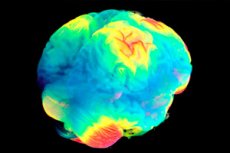First-of-its-kind test can predict dementia nine years before diagnosis
Last reviewed: 14.06.2024

All iLive content is medically reviewed or fact checked to ensure as much factual accuracy as possible.
We have strict sourcing guidelines and only link to reputable media sites, academic research institutions and, whenever possible, medically peer reviewed studies. Note that the numbers in parentheses ([1], [2], etc.) are clickable links to these studies.
If you feel that any of our content is inaccurate, out-of-date, or otherwise questionable, please select it and press Ctrl + Enter.

Researchers from Queen Mary University of London have developed a new method of predicting dementia with more than 80% accuracy and up to nine years before diagnosis. This new method provides a more accurate prediction of dementia than memory tests or measurements of brain shrinkage, which are two commonly used methods for diagnosing dementia.
The team, led by Professor Charles Marshall, developed a predictive test by analyzing functional MRI (fMRI) scans to detect changes in the brain's default mode network (DMN). The DMN connects brain regions to perform specific cognitive functions and is the first neural network affected by Alzheimer's.
The researchers used fMRI scans of more than 1,100 volunteers from the UK Biobank, a large biomedical database and research resource containing genetic and medical information from half a million UK participants, to assess the effective connectivity between ten brain regions that make up the default mode network. p>
The researchers assigned each patient a dementia probability value based on the degree to which their effective connectivity pattern matched either the dementia-indicative or controlled pattern.
They compared these predictions with each patient's medical data stored in the UK Biobank. The results showed that the model accurately predicted the onset of dementia up to nine years before formal diagnosis with over 80% accuracy. In cases where volunteers subsequently developed dementia, the model was also able to predict, to within two years, how long it would take to receive a diagnosis.
The researchers also examined whether changes in the DMN could be caused by known risk factors for dementia. Their analysis showed that genetic risk for Alzheimer's disease is strongly associated with changes in connectivity in the DMN, supporting the idea that these changes are specific to Alzheimer's disease. They also found that social isolation likely increases the risk of dementia through its effect on connectivity in the DMN.
Professor Charles Marshall, who led the research team at the Center for Preventive Neuroscience at Queen Mary's Wolfson Institute of Population Health, said: "Predicting who will suffer from dementia in the future will be vital to developing treatments that can prevent irreversible loss of brain cells, which causes symptoms of dementia. Although we are getting better at identifying proteins in the brain that can cause Alzheimer's disease, many people live for decades with these proteins in the brain without developing symptoms of dementia.
"We hope that the brain function measure we have developed will allow us to be much more precise about whether and when someone will develop dementia, so we can determine whether they may benefit from future methods of treatment."
Samuel Ereira, lead author and postdoctoral fellow in the Wolfson Institute for Population Health's Center for Preventive Neuroscience academic program, added: "By using these analyzes on large data sets, we can identify those at high risk for dementia and also find out which environmental factors pushed these people into high-risk areas.
"There is enormous potential to apply these techniques to different neural networks and populations to better understand the relationship between environment, neurobiology and disease, both in dementia and possibly other neurodegenerative diseases. FMRI is a non-invasive medical technique imaging, and takes about six minutes to collect the necessary data on an MRI scanner, so it can be integrated into existing diagnostic pathways, especially where MRI is already used."
Hojat Azadbakht, CEO of AINOSTICS (an AI company collaborating with leading research groups to develop brain imaging techniques for early diagnosis of neurological disorders), commented: “The approach developed has the potential to fill a huge clinical gap by providing a non-invasive biomarker for dementia. In a study published by a team from Queen Mary University, they were able to identify people who later developed Alzheimer's disease, up to nine years before receiving a clinical diagnosis. It is during this pre-symptomatic stage that new disease-modifying techniques may benefit patients the most.
